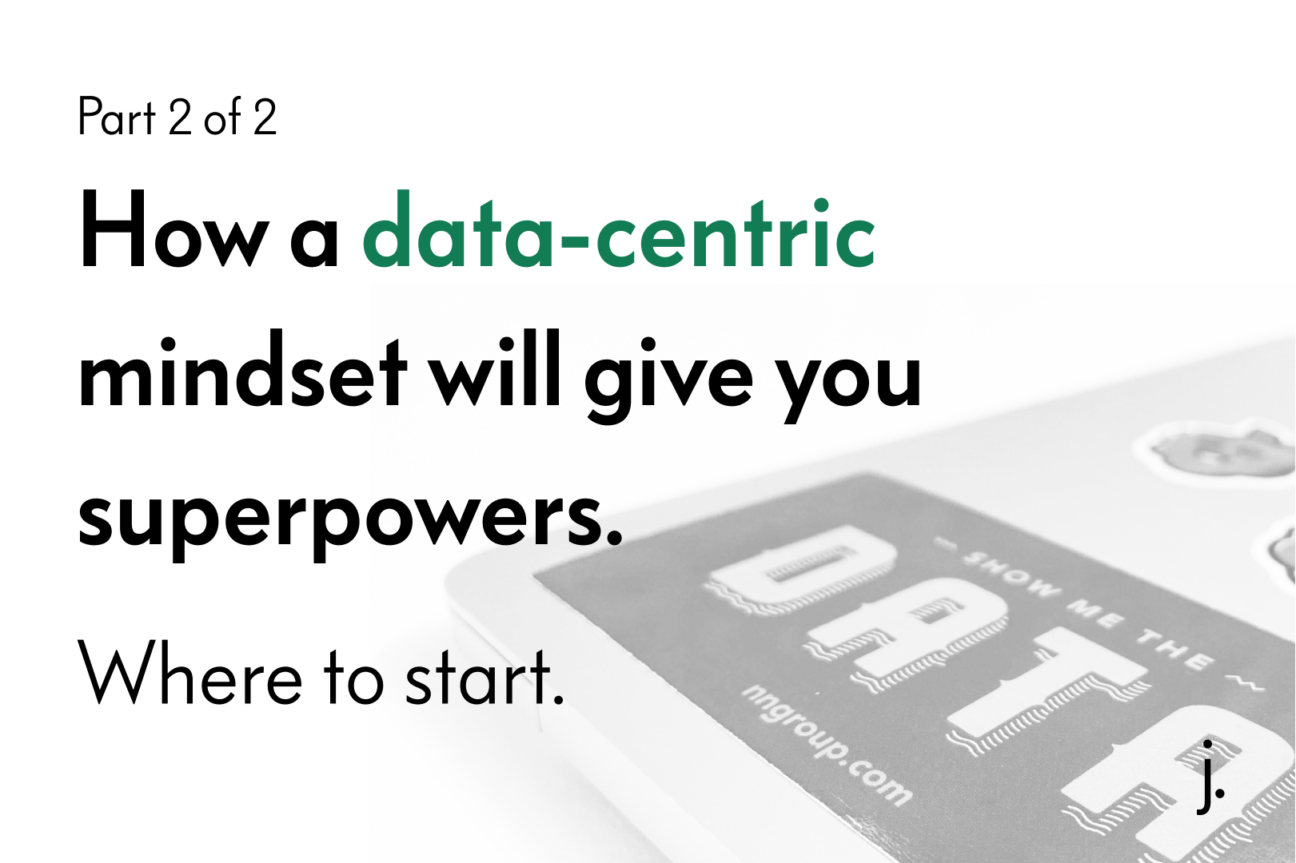Where to start.
If you have read my previous post, you hopefully have a better understanding of what data thinking is. You might even feel that this is obvious and a no-brainer to get going in your project – great! But where to start? How to go from nothing to superpowers? Well, it’s not as hard as it seems, just remember how you would go about eating an elephant – piece by piece.
The short version is:
-
Start out small.
-
Define a goal.
-
Define a number of success.
-
Identify what data you need.
-
Build & release.
-
Follow up & decided on how to proceed.
Start out small
It’s very easy to get overwhelmed when working with data and set the ambitions too high. You want to cover everything. But setting the bar too high is a great way of failing since it will be too hard and expensive.
Define a goal
Instead, start out small by defining one or two goals. Organization and project-level goals are generally more difficult, so start with goals for a feature or user-story. Make sure you are specific and define them in a measurable way by expressing the goals in numbers.
When you are a bit more comfortable with the process and have some results up your sleeve, you can turn your focus to the project-level goals. They tend to be a bit more vague, broad, and long-term which makes them harder to work with. Usually, there is some sort of manager(s) that needs to be involved when working with the project-goals as well, which tends to make it a longer process. Therefore, again, we recommend starting with a story or feature so you can keep it within your team without the need for buy-in from managers.
Define a number of success
About now you will probably realize that it’s hard to express things in numbers and that you don’t really have a clue. That’s fine for now (this is still new to you). Discuss together with colleagues that have a good understanding of the product and business and try to come up with a number. If you still struggle, make a guess. For now, the number itself isn’t that important, but having a number will make your life so much easier when you start to analyze the data later on.
In the future, when you have the routine of expressing all your goals and expectations in numbers, this process will start to feel much more natural. By then, data becomes a natural starting point for every discussion and the absence of it will start to feel uncomfortable. But right now, you’re not there. So putting a number, even if it shows to be completely off will force you into this mindset and way of working.
Identify what data is needed.
When you have your goals in place, decide on what data points you need to follow up on your goals. And once again, start out small. Select a data-point that you can get with very little investment. Perhaps it’s as simple as counting events for a certain action or manually collecting comments from users.
And try to stop after that. You’re good to go.
When you have measurable goals, decisions on what data you need, and know how to get it, you can continue with your regular implementation process. When it’s time to get it in the hands of the users you can start to collect data and follow up on your goals.
Follow up.
About now you probably realize that the data-point you’ve selected isn’t enough and can’t give the full answer to your questions. Which is fine for now. Just remember that whatever decision you make, it will be more informed than your previous ones. The complexity increases for every data-point you add. Therefore we strongly advise you to keep it simple now in the beginning. It’s more important to get started and get this mindset and routine going.
That’s it. You’ve now closed your first data thinking cycle and from this point, you’re just gonna keep doing this in e.v.e.r.y.t.h.i.n.g you do. Over time you’ll be able to be more and more advanced in what kind of data you collect, the number of data-points, etc.
What’s the alternative – being stupid?
Ok, so what’s the alternative, what if we’re not using data? Well, in our opinion it’s the difference between being smart or not. When you do not base your decisions on data you constantly make assumptions and guesswork. When not having a clear way of evaluating your work (measurable goals) you’ll have a very hard time to determine if you’re actually succeeding or not. Building software based on assumptions is simply an irresponsible way of using your resources and users’ time. So, be smart, use data.
Summary
-
Data is your friend when working with software development. It will provide you with knowledge and help you build better products.
-
Start out small, something is better than nothing. Data can be collected in the very simplest format and still provide a lot of value.
-
Express your goals in numbers, it will help you follow up and to align everyone on what you are doing.
Also, remember the “sticker-tip” (from this post), to always counter any argument or statement with: “Sure, ok, show me the data”. It will change how you and your team work, and make decisions (hopefully with you still allowed into the room). I will end this article with a quote from William Thomson (Lord Kelvin) that I think summaries things rather good:
